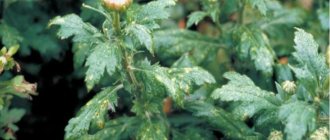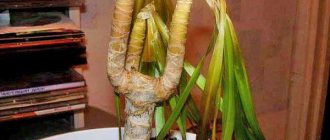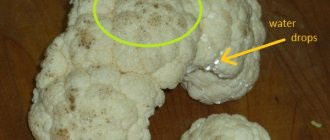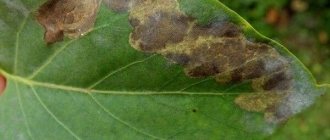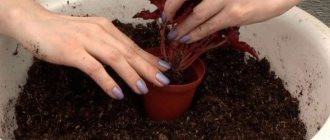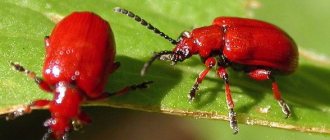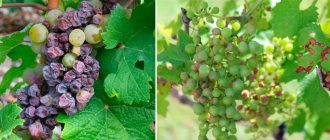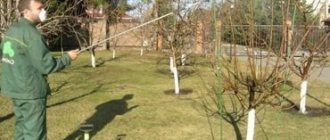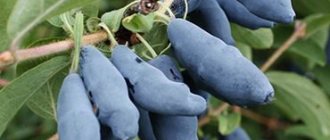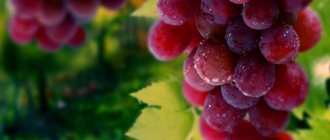Features of strawberry diseases
Diseases to which strawberries are susceptible are classified into three main groups:
- fungal;
- bacterial;
- viral.
Most often, strawberry plantations are affected by pathogenic fungi that find themselves in conditions favorable for development and reproduction (extreme heat or little sun, high humidity, dense plantings). The fight against them is not always successful and takes a lot of effort and time.
Viral infections related to quarantine diseases and requiring special protection and prevention measures are not uncommon. Bacterial diseases, fortunately, are less common, but it is also necessary to know about them.
White spot
The first signs of the disease are small round dots of red-brown color. The lesion can be observed over the entire surface of the leaf blade. Over time, the spots merge into one whole, the middle of the affected area becomes lighter and perforated, that is, the leaf is covered with holes.
Due to this fungal disease, the plant loses most of its green mass. The taste of the berries deteriorates, the yield is low. White spotting cannot be treated; the affected parts must be removed and healthy bushes treated with an antifungal drug that contains copper.
How to deal with white spotting:
- Fertilize strawberries after harvesting with phosphorus-potassium fertilizers. This will increase plant immunity.
- Apply nitrogen and organic fertilizers moderately.
- Don't plant strawberries too close to each other.
- In spring, remove dried leaves and change the mulch.
- Treat the bushes with Bordeaux mixture three times throughout the entire season.
- Avoid drip irrigation, which contributes to the occurrence and spread of the disease.
It is not recommended to plant strawberries where potatoes, tomatoes, eggplants, corn and cucumbers grew.
Fungal diseases of strawberries
Of the fungal infections (see description with photographs), strawberry beds are most often affected by various rots. The crop is susceptible to infection during rains and if prompt action is not taken, the crop will be lost.
Gray rot
The causative agent of gray rot is the pathogen Botrytis fuckeliana, characterized by a short (up to two days) period of spore maturation. Signs:
- formation of brown spots on leaves, ovaries, berries;
- the appearance of a gray coating (fungus sporulation).
In cloudy weather with precipitation, fungal spores are spread throughout the garden bed, infecting strong, healthy plants. Harvest loss – up to 60%.
At the initial stage of planting, you can save it with solutions of Barrier, Fitosporin, Bordeaux mixture (3%). In case of serious damage, plants are removed from the beds.
To prevent infection, early treatment of plantings with copper sulfate, chalk, and ash infusion is recommended.
On a note! The beds located near the plantings of garlic and onions are less affected by the gray rot fungus.
White rot
Many gardeners are familiar with white rot of strawberries, when the berries are covered with a whitish mossy coating, similar to poplar fluff. This is how the fungus Sclerotinia Libertiana manifests itself, becoming more active during the cloudy rainy season.
If there is little sun in May and June, then there is a high probability of white rot appearing on strawberries. Thickened plantings and excess soil moisture provoke infection.
Recommended treatment with drugs:
- Horus;
- Switch.
Berries and shoots are cut off; in case of severe damage, the entire bush is removed. White rot is dangerous for various crops, so preventive treatment of all plantings on the site, weeding the beds, and removing plant debris are important.
Black root rot
If the ground part of the bushes changes color (brown), shoots and stems become fragile, then most likely the roots are damaged by black rot. Rhizoctoniosis primarily manifests itself on the roots of strawberries, and changes in the above-ground parts are already a consequence of the infection.
The roots become covered with numerous dark spots, gradually covering all areas of the root system. Rot spreads, roots fall off, and the plant begins to wither. Rhizoctoniosis is dangerous because the peak occurs during the fruiting phase, causing the loss of most of the berry harvest. There is no effective treatment; infected plants are removed from the beds and the soil is disinfected.
Black rot of fruits
Unlike rhizoctonia, this type of infection affects only the fruits of the crop. The berries do not ripen, become brown, and become covered with a whitish and then blackening coating of mycelium. The pulp of diseased fruits is watery, and rot oozes from the pores.
As soon as infected plants are noticed in the garden bed, they are immediately removed and burned. It is forbidden to use strawberry bushes affected by any infections in compost.
Fusarium
The causative agent, the fungus Fusarium oxysporum, is found on various garden crops (potatoes, tomatoes), which seriously complicates the fight. The infection spreads quickly, instantly capturing ridges with healthy plants.
Symptoms:
- formation of brown-brown spots on leaf blades and shoots;
- wilting of leaves;
- dying off.
If the disease is noticed in the initial phase, then treatments with solutions of fungicidal preparations can help:
- Horus;
- Fundazol;
- Phytodoctor.
Most often, the bushes cannot be saved, so they are removed from the ridges, and new healthy planting material is prepared for the next season.
Verticillium
Gardeners do not immediately notice that strawberries are infected with a dangerous pathogenic fungus. Verticillosis manifests itself after 1-1.5 years, when the bushes begin to lag in growth and there are no mustaches. The causative agent is fungi of the species Verticillium albo-atrum Reinke et Berthold and V.dahliae Kleban, causing the lower tier of strawberry leaves to dry out and the plant to die.
On a note! When infected with verticillium, the petioles become reddish in color, and the growth of the bushes sharply slows down.
Yield indicators decrease slightly, but the presentation and taste of the berries seriously deteriorates. To prevent the disease, treatment with biological products is carried out:
- Phytodoctor;
- Fitosporin;
- Trichodermin.
Of the chemical fungicides, results are obtained by spraying the plantings with Bordeaux mixture, Maxim, and Fundazol. But all these drugs are effective only for prevention; if an infection occurs, you will have to remove the infected plants.
Powdery mildew
One of the common diseases of garden strawberries, when affected, the above-ground part of the plant becomes covered with a whitish-transparent coating. Small spots gradually grow, as a result of which the bushes become “captive” of an insidious infection. Plaque appears in all parts of the strawberry:
- stepchildren;
- foliage;
- sockets;
- berries
Infected areas dry out and die. Most often, powdery mildew manifests itself at high air humidity, when the soil is waterlogged. To get rid of the scourge, use ash infusion, a solution of soda ash (50 grams of soda per 10 liters of water).
For preventative purposes, bushes are sprayed with Topaz fungicide, watering and fertilization are controlled.
Late blight
Late blight is dangerous not only for potatoes and tomatoes, but also for strawberry plantations. Yield losses from the fungus reach 90%.
Signs:
- deformation and blackening of plant buds;
- the appearance of brown spots on leaves and stems;
- formation of brown spots on fruits, drying out of berries.
Often seemingly healthy strawberries taste bitter, which means the plant has been infected by a fungus. When digging up diseased bushes, deformation of the roots is noticeable - drying out, blackness.
If only isolated lesions are noticed in the garden bed, then there is hope to save the planting. Bushes with late blight are dug up and burned, the soil is disinfected (Fitosporin, potassium permanganate).
In case of mass infection (30-50%), the entire plantation is removed and the bed is sown with calendula, marigolds, and alfalfa to improve the soil health. Return strawberries to their old place no earlier than after 4-5 years.
White spot
Ramularia or white spotting is dangerous for planting on heavy soils. Most often, young bushes suffer, on the foliage of which numerous white spots with a dark brown or reddish border are formed. As the disease develops, the spots spread to the peduncles and stems, forming holes.
The causative agent is the fungus Mycosphaerella fragariae. Strawberries lose their green mass, yield decreases to 70-100%.
If the disease is at an early stage, the bushes can be saved (pruning and treatment with Bordeaux mixture 1%). But most often the plants are dug up and burned.
Brown spot
The causative agent, the fungus Marssonina potentillae, parasitizes the leaves of the plant. Reddish-brown spots appear on the surface, which gradually grow and become covered with black mycelial spores.
Infected bushes dry out and die. The disease is sluggish, activity is usually visible in early summer, then, when new foliage appears, the infection subsides. Without treatment, berry plantations are at risk of being completely destroyed.
What to do:
- cut off or completely remove diseased plants from the beds;
- treat plantings with biofungicides;
- disinfect soil and garden tools;
- mulch the soil in the rows;
- add potassium and phosphorus additives.
On a note! After picking the berries, it is recommended to treat the plantings with Fitosporin.
Brown spot
Around mid-summer, strawberries become infected with Dendrophoma obscurans. The fungus invades strawberry leaves, causing them to become covered with reddish or brown spots. The tissue along the edge of the foliage gradually dies off, the plant withers and dies.
Spraying with copper-containing preparations at the beginning of the growing season and following the rules of crop care help prevent brown or corner spotting. There is no treatment; the affected bushes are dug up and burned along with the roots.
Anthracnose (black spot)
Another type of spotting of garden strawberries is caused by an ascomycete fungus. Most often, the disease occurs in hot and humid weather, affecting all parts of the plant.
Signs:
- brown spots on leaf blades;
- brown sores on strawberry stems;
- root rot;
- rotting of berries, mummification.
Black spotting appears on ovaries, green, ripening berries. Such fruits cannot be eaten.
How to treat anthracnose? At an early stage, spraying with Ridomil Gold, Quadris, Bordeaux mixture (1%) is recommended. In case of severe damage, the plantings are destroyed.
Common Pests: How to Identify and Control Them
Strawberries appeal not only to people, but also to many pests. Moreover, most of them are dangerous not only in themselves, but also as carriers of pathogenic fungi, viruses, and bacteria.
Raspberry-strawberry weevil
It affects not only strawberries and raspberries, but also most plants from the Rosaceae family. Both adults (small black bugs) and larvae damage plantings. The first ones feed on the juice of the leaves. The females then lay eggs in the flower buds, while gnawing on the peduncle. The hatched larvae eat them from the inside, destroying the fruit ovaries. The buds turn black and fall off.
Both adults and larvae of the raspberry-strawberry weevil cause damage to strawberries.
For prevention, onions, garlic, marigolds, and nasturtiums are planted between the rows of strawberries or along the perimeter of the bed. Crops that may be affected by the weevil should be placed as far apart as possible. Folk remedies also help prevent the appearance of weevils - infusions of wormwood, tansy, hellebore, walnut shells, mustard powder, onion peels. Strawberries are sprayed approximately once every week and a half, and in the budding and flowering phase - every 2-3 days.
In the event of a massive pest invasion, the bushes are regularly shaken vigorously in the early morning, after having spread newspaper, oilcloth, and covering material under them. Homemade traps - bottles filled with sugar syrup with the addition of yeast - also have a good effect. The inside of the necks is lubricated with vegetable oil so that pests cannot get out. The bushes and the soil under them are sprayed with Novaktion, Iskra-M, and Kinmiks. Treatment must be carried out after harvesting in order to destroy the larvae overwintering in the soil.
Strawberry mite
One of the most common and dangerous pests for crops. It is impossible to see it with the naked eye. The leaves become covered with small brown dots and acquire an unnatural yellowish tint. Their surface becomes corrugated, young leaves do not unfold completely. This will most likely not kill the strawberries, but the yield will decrease significantly (by 50–60%).
The strawberry mite is one of the most common pests of strawberries.
For prevention, after harvesting, plants must be sprayed with Karbofos. During the growing season, the soil is dusted with colloidal sulfur 3–4 times. From it you can prepare a solution for treating bushes. Folk remedies - infusion of onion or garlic pulp, dandelion leaves. Before planting, the roots of the seedlings are immersed for 2–3 minutes, first in hot (40–45ºС), then in cool (15–20ºС) water.
If the pest has multiplied en masse, use Fufanon, Kemifos, Novaktion, Actellik. The Zenga-Zengana, Torpeda, Vityaz, and Zarya varieties are resistant to strawberry mite damage.
Strawberry leaf beetle
Small brown bugs settle mainly on the underside of leaves. They feed on leaf tissues, gnawing them from the inside. Females lay eggs on petioles. The hatched larvae also feed on leaf tissue. They become thin, translucent, and sometimes holes appear. As a result, the bushes stop developing and fruiting stops.
The main damage to strawberries is caused by the larvae of the strawberry leaf beetle.
To scare away the pest from the garden bed, in early spring the soil is sprinkled with tobacco dust or dry leaves crushed into crumbs. But this should not be overused, so as not to deteriorate the taste of the berries. Before flowering, strawberries are treated with Karbofos or Karate. Regular weeding is required. Particular care must be taken to destroy meadowsweet and cinquefoil. The strawberry leaf beetle feeds on these plants too.
Strawberry whitefly
Very small white butterflies, similar to moths, cling to the underside of the leaves. Any touch to the bush is enough for them to rise into the air. The leaves are covered with a sticky coating and a layer of sooty fungus. Whiteflies feed on plant sap, so the tissues gradually become discolored, then the leaves turn black and die.
For some reason, the strawberry whitefly is especially partial to the yellow color; this feature is used in making traps
Homemade traps made from pieces of yellow cardboard smeared with something sticky (long-drying glue, sugar syrup, jam, honey, Vaseline) give a good effect in the fight against whiteflies. In case of mass invasion, Aktaru, Rovikurt, Confidor are used. A folk remedy is any shampoo or flea spray that contains fipronide. For prevention, onions and garlic are planted between the rows of strawberries, and the plants are sprayed with an infusion of arrows or mush every 10–12 days.
Strawberry nematode
Nematodes are tiny thread-like worms that feed on the sap of young leaves. They settle in their sinuses, so they are practically invisible. Females lay eggs on the roots - they are covered with spherical protuberances approximately the size of a poppy seed. During the feeding process, nematodes infect tissues with a substance that interferes with normal metabolism. As a result, the leaves turn yellow and become deformed, the veins on them thicken, the number of buds sharply decreases, and the berries become smaller.
The strawberry nematode is almost impossible to see with the naked eye.
Nematodes cannot tolerate high temperatures at all. Therefore, before planting in the ground, the roots of the bushes are immersed in hot water for several minutes. The garden bed is watered with it in early spring. The first young leaves are sprayed with 1% Bordeaux mixture. The pest affects not only strawberries, but also potatoes, peas, and onions. They need to be planted as far apart as possible.
Strawberry nematode larvae, hatching from eggs, damage strawberry roots, eating them from the inside
To combat the nematode, Phosfamide, Vitaros, Carbation, Heterophos are used. After harvesting, strawberries are treated with Skor and Fundazol. A folk remedy is nettle infusion, but it does not always have an effect.
Aphid
One of the most “universal” pests, affecting both garden and indoor plants. These small insects of different shades (from greenish-yellow to black-brown) settle on them in whole colonies, clinging to the underside of young leaves, buds, and fruit ovaries. Aphids feed on plant sap, so the affected areas become covered with small beige dots, the leaves become deformed and curled. At the same time, a sticky transparent coating appears. It is worth noting that most often aphids live in a stable symbiosis with ants, and they will also have to be fought.
Aphids are a pest that does not disdain almost any garden crops, strawberries are no exception.
The pest is effectively repelled by any strong odors. It is useful to plant any herbs next to the strawberry bed, as well as wormwood, marigolds, fennel, lavender, and chamomile. Many of these plants attract natural enemies of aphids - ladybugs - to the site. All these greens, as well as tops of tomatoes, potatoes, onions and garlic, lemon peels, hot peppers, and tobacco crumbs can be used as raw materials for preparing infusions. To prevent the appearance of aphids, it is enough to spray strawberries once every 8–10 days; if insects are detected, spray them 3–4 times daily.
Chemicals are used only in the event of a massive pest invasion. Usually, folk remedies are quite enough. You can use any general insecticide - Aktara, Iskra-Bio, Inta-Vir, Konfidor and so on.
Video: folk remedies for fighting aphids
Chafer
The main damage to strawberries, as well as to other garden crops, is caused by the larvae of the cockchafer, which eat the roots of the plants. As a result, the bushes quickly die.
Effective pest prevention is annual deep loosening of the soil in spring and autumn. White clover is planted between the rows, saturating the soil with substances that repel larvae. In early spring, before the leaves bloom, the substrate in the garden bed can be watered with ammonia diluted with water (2 ml per liter) or several deep grooves can be made by pouring Decis and Karbofos granules into them. A folk remedy is an infusion of onion peels. During the spring it is poured 3-4 times under the roots of each bush.
The larvae of the cockchafer eat the roots of the plant and can destroy an entire strawberry bed in a short time
To combat the larvae, the drugs Nemabakt, Pochin, Zemlin are used. Adults are discouraged from planting strawberries by elderberries, lupines, and turnips planted next to the garden bed.
Spider mite
The pest is easily identified by the thin, translucent threads that look like cobwebs entwining leaves, buds and fruit ovaries. It feeds on the sap of the plant, the affected areas of tissue gradually turn yellow and dry. It settles mainly on the underside of the leaf, which is gradually covered with a thin whitish film. The varieties Pervoklassnitsa, Anastasia, Sunrise, and Zolushka Kubani are resistant to spider mite damage.
Spider mites are not insects, so only special preparations—acaricides—provide the desired effect in the fight against them.
For prevention, onions, garlic, calendula, and marigolds are planted between strawberry bushes. The bushes themselves are sprayed with an infusion of onion or garlic pulp and a decoction of cyclamen tubers. But such folk remedies do not always give effect. If a significant part of the bushes in the garden has been damaged by a tick, it is better not to waste time and immediately use specialized preparations - acaricides (Aktofit, Akarin, Vertimek, Neoron, Apollo). They need to be changed with each new treatment - the pest develops immunity extremely quickly.
Slugs
Another “omnivorous” garden pest. Slugs look like shellless snails. They feed on the pulp of strawberries and leaf tissue, making holes or through passages in it. Their traces are noticeable on the surface of the fruits and leaves - stripes of a sticky silvery coating.
Slugs are no different in their speed of movement and camouflage abilities. Therefore, manual collection of pests gives a good effect. It is best to do it early in the morning. At this time, slugs gather under the leaves and are least active. You can also use traps - cabbage leaves, grapefruit halves, containers filled with beer, sugar syrup, jam, dug into the soil.
Slugs are unable to destroy strawberry bushes, but they greatly spoil the presentation of the berries.
To protect against pests, bushes are surrounded with a “barrier” of powdered eggs or nut shells, sand, pine or spruce needles. The soil is sprinkled with tobacco crumbs, wood ash, and mustard. Any strong-smelling herbs are planted around the perimeter of the bed. You can also try to attract natural enemies of slugs to the site - hedgehogs, frogs and birds. Ordinary chickens do a good job.
Insecticides are used only in the event of a massive invasion of slugs, which is quite rare. The best effect is given by the drugs Metaldehyde, Thunderstorm, Slug Eater.
Video: how to deal with slugs in the garden
Viral infections
Plants infected with viruses are stunted in growth, reduce productivity, and degenerate. They are spread by vegetative propagation by insects (aphids), mites, and nematodes. Plants infected with viruses are removed and destroyed.
On a note! For new plantings, it is forbidden to take tendrils from infected plants!
The most common viral diseases of strawberries are:
- marginal yellowing - dwarfism of bushes, premature reddening of old leaves. The tops of the plant die off, yield loss is up to 25%;
- wrinkling - the formation of deformed wrinkled leaves, the appearance of necrotic spots of irregular shape on the leaf blades. Up to 50% of the harvest is lost, the quality of the berries sharply decreases;
- mottling - weakening of plants, the formation of numerous light spots on the foliage, slowing down the formation of tendrils and ovaries;
- growth - petioles become elongated, thread-like, ovaries do not form;
- xanthosis - mosaic appearance of plant foliage. On the surface of the plates there are spots resembling a mosaic. Such bushes do not have ovaries.
Mycoplasma infections are dangerous among virus-like ones:
- greening of petals - change in color of strawberry flowers, chopping of ovaries and berries, enlargement of stipules;
- June yellowing - the formation of yellow or whitish spots on the leaf blades, premature death of the crop.
In the fight against viral diseases, the main role is played by prevention, as well as by treating plantings with products against aphids and nematodes.
Anthracnose
Anthracnose on strawberry leaves
This disease is caused by the fungus ascomycetes. It is especially active in warm, humid weather. Pathogen spores enter the beds through the ground, with infected seedlings, and tools. The pathology affects flowers, roots, leaves and berries of garden strawberries. Occurs at any stage of maturation. How does anthracnose manifest?
- Dark brown cankers appear on the shoots.
- The leaves become covered with red-brown spots and dry out.
- Rot forms on the root system, which leads to the death of the plant.
- Unripe fruits become covered with depressed dark spots and dry out. Mature ones become watery and darken.
To prevent anthracnose, seedlings are planted according to the recommended scheme. The bushes are periodically fed with mineral fertilizers. Before the formation of ovaries, spray twice with a solution of Bordeaux mixture (1%) with the addition of sulfur or the drug Tiovit-jet. How to cure fungal anthracnose:
- At an early stage, treat strawberries with fungicides Metaxil, Ridomil-gold, Quadris.
- At a later stage, spray with Bordeaux mixture (1%).
Bacterial diseases
Among the bacterial infections that affect strawberries are:
- root cancer - occurs due to freezing of the plant. Strawberry roots turn black and die;
- bacterial burn - the formation of irregularly shaped golden spots on the leaves.
All plants with similar signs are removed, and the beds are treated with antibiotic solutions. The pathogens often spread to strawberries from weeds and shrubs growing nearby (hawthorn), so it is necessary to change the place where the crop is planted.
Black root rot
Black root rot
can occur at any time during the growing season. Transmitted through the air, carried by insects. Appears in the form of small black spots on the roots of strawberries. Over time, they increase in size and merge. The entire bush turns black up to the rosette. The roots become brittle and dry. Plant growth stops and productivity decreases.
There is no cure for black root rot. Infected bushes are dug up, burned, and the ground is disinfected. How to prevent the disease from occurring:
- Soak the strawberry roots in hot water (+45˚) before planting.
- Plant seedlings in a sunny, ventilated area.
- Avoid areas where potatoes used to grow.
- Stick to the planting pattern.
- In the spring, treat the beds with fungicides.
- Feed the bushes only with rotted compost.
- Replant plants 1 time/3 years.
- Before sheltering for the winter, spray with Phytodoctor.
Prevention
It is difficult to find a variety or hybrid form of garden strawberry that is resistant to all diseases. That is why preventive measures and adherence to agricultural practices are so important. Often, gardeners themselves, “forgetting” about weeding, crop rotation, and fertilizer application rates, provoke outbreaks of infections on their own plots.
Recommendations:
- planting healthy strawberry seedlings;
- separate cultivation of different varieties of crops;
- compliance with crop rotation;
- preventive treatments of strawberries in the spring against pests and diseases (biological products, herbal infusions);
- maintaining distances when planting bushes;
- timely weeding and loosening of beds;
- using mulch;
- pruning bushes, mustaches, harvesting plant debris in the fall;
- replacement of planting material every 3-4 years.
Knowledge and adherence to the basics of agricultural technology and crop prevention will protect plantings from insidious diseases. Less hassle and higher yield - isn’t this what all gardeners strive for?
Natalia Severova
Black rot on fruits
Black rot on strawberries
Only affects the berries. They become brown, covered first with a gray coating, and then with black fungal mycelium. The fruits secrete juice, become watery, lose taste and smell. The disease develops from damage by insects and slugs. Particularly active in humid, hot weather.
Black rot on fruits cannot be treated. Infected strawberries are dug up and burned. Measures to prevent fungal disease:
- planting healthy seedlings;
- planting seedlings on raised beds (15-40 cm);
- soil disinfection with a solution of potassium permanganate (2 g/10 l of water);
- reduction of nitrogen and organic fertilizing.

